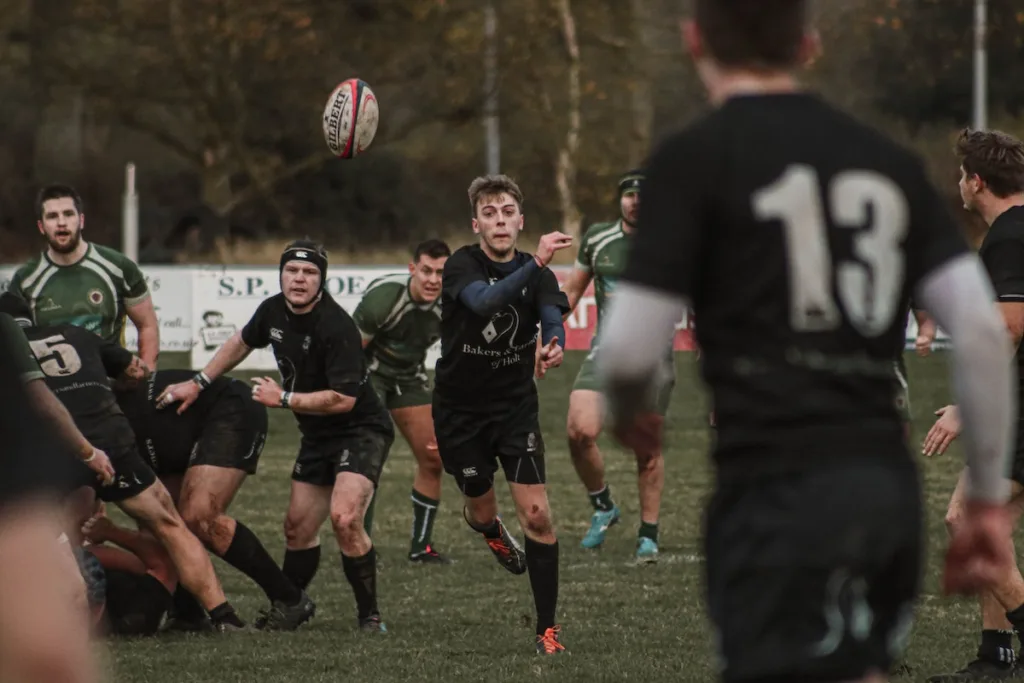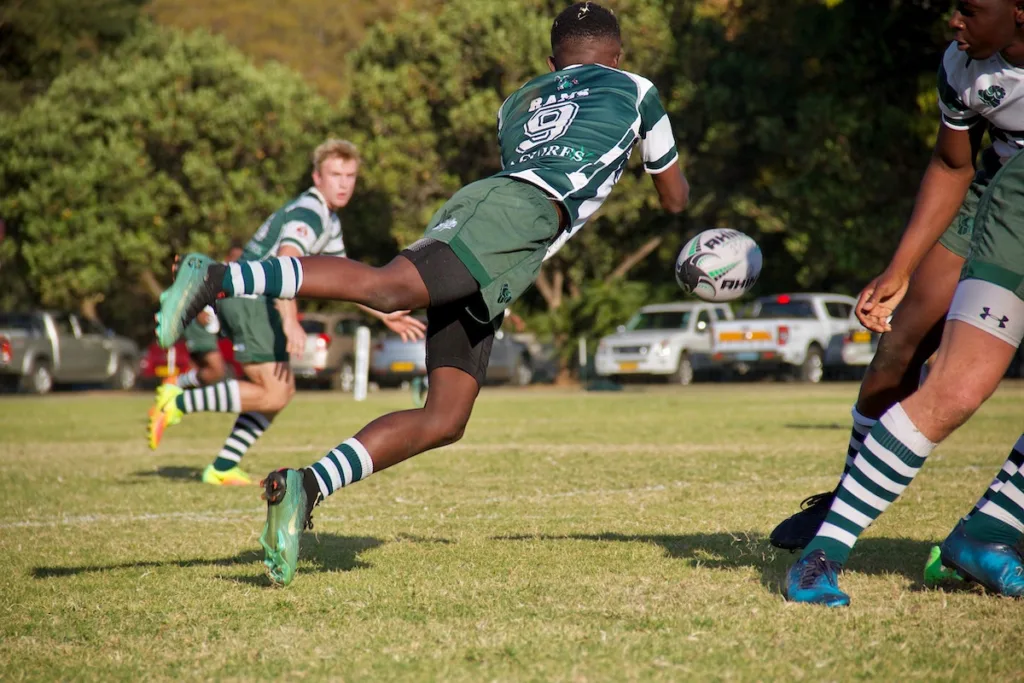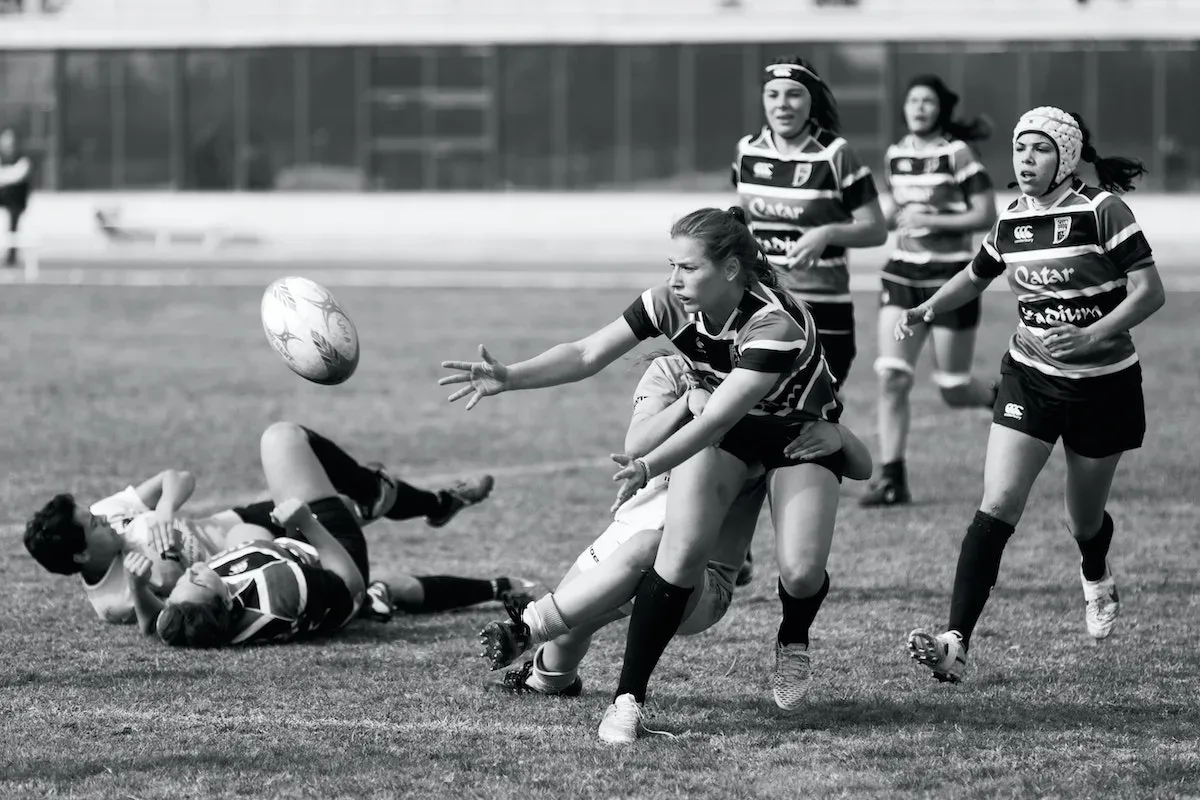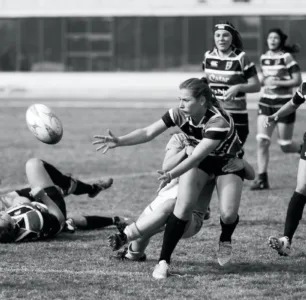Improving rugby passing has several benefits, including:
- Better ball control: More accurate and precise passing means that your team will have greater control over the ball and be able to keep possession for longer.
- Increased teamwork: Good passing requires coordination and communication among players, helping to build a stronger sense of teamwork on the field.
- More scoring opportunities: By accurately passing the ball to your teammates, you can create opportunities to penetrate the opposition’s defence and score more points.
- Confidence boost: When a player successfully executes a good pass, it can give them a confidence boost, which can improve their overall performance on the field.
- Confuses the opposition: Good passing skills can also make it more difficult for the opposition to defend, as they will have to be constantly adapting to the movement of the ball.

Are there different types of passes in rugby?
Yes, there are different types of passes in rugby, each with its own purpose and use in the game:
- Flat Pass: A flat, short pass used for quick ball transfer and avoiding defenders.
- Pop Pass: A short pass made from the ground, usually used in close-quarters play.
- Skip Pass: A longer pass made over the heads of the first line of defenders, used to create space and advance the ball upfield.
- Loop Pass: A long, high pass used to change the point of attack or create space for a teammate to run into.
- Cutout Pass: A longer pass made behind the receiver, used to create space for the receiver to run into.
- Scissors Pass: A two-player manoeuvre where one player passes to a teammate who has run in front of them, used to confuse defenders.
- Overhead Pass: A pass made overhead, usually used in close-quarters play to get the ball quickly to a teammate.
Each type of pass has its own specific technique, and it’s important for players to be able to perform a variety of passes effectively in different game situations.
How to pass properly in rugby
To pass properly in rugby, you should follow these steps:
- Body Position: Stand with your feet shoulder-width apart, weight slightly forward, and shoulders facing the intended target.
- Grip: Hold the ball with both hands, fingers around the ball and thumbs on top for control.
- Preparation: Take the ball back behind your hip, preparing for the pass.
- Delivery: Bring the ball forward, using a smooth and fluid motion to pass the ball to your target. Aim to transfer the ball with a slight flick of the wrists, to generate extra speed and power.
- Follow Through: After passing, follow through with your hands to complete the motion, pointing in the direction of the pass.
- Timing: Good timing is crucial in rugby passing. Wait for your target to be in the optimal position before passing, and release the ball at the right moment for the best results.
Remember to keep your eyes on the target, practise proper technique, and work on developing good communication with your teammates.

Ten best passing drills for rugby
- Wall Pass Drill: Players form a line and pass the ball back and forth, working on accuracy and speed.
- Passing Relay Drill: Players split into teams and pass the ball down the line as fast as possible, focusing on maintaining possession and keeping the ball moving quickly.
- Two-on-One Drill: Two offensive players attempt to pass the ball past one defender, working on quick and effective passing skills.
- Triangle Pass Drill: Three players form a triangle and pass the ball around, practising passing in different directions.
- Shotgun Drill: Players spread out and pass the ball in a random direction, working on reaction time and hand-eye coordination.
- Partner Passing Drill: Players pair up and pass the ball back and forth, focusing on accuracy and ball control.
- Three-Man Weave Drill: Three players pass the ball down the field, practising teamwork and effective passing skills.
- Box Drill: Players form a square and pass the ball around, working on accuracy and speed.
- Quick Passing Drill: Players pass the ball quickly from one player to another, focusing on speed and quick thinking.
- Overlap Drill: Players overlap and pass the ball, working on timing and coordination with their teammates.

